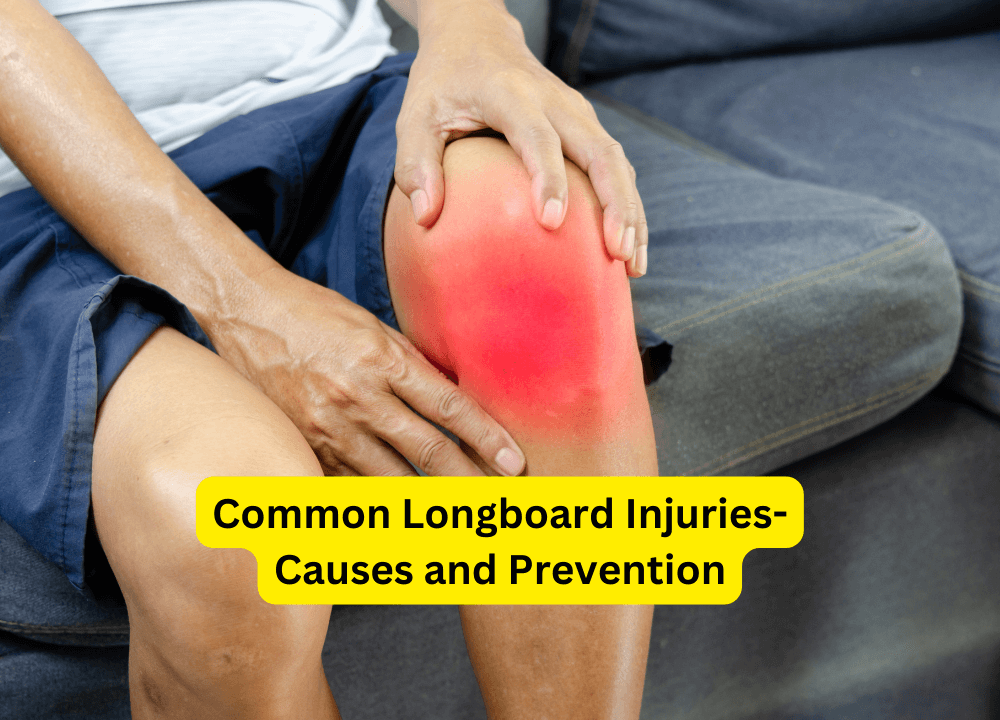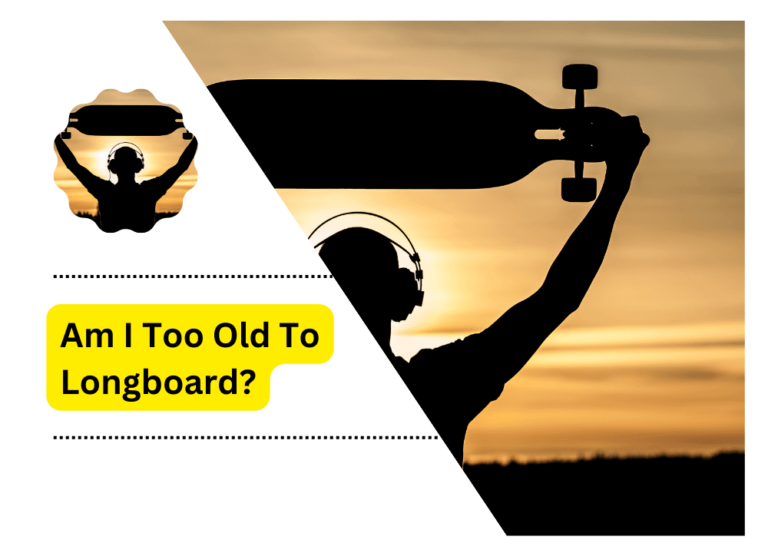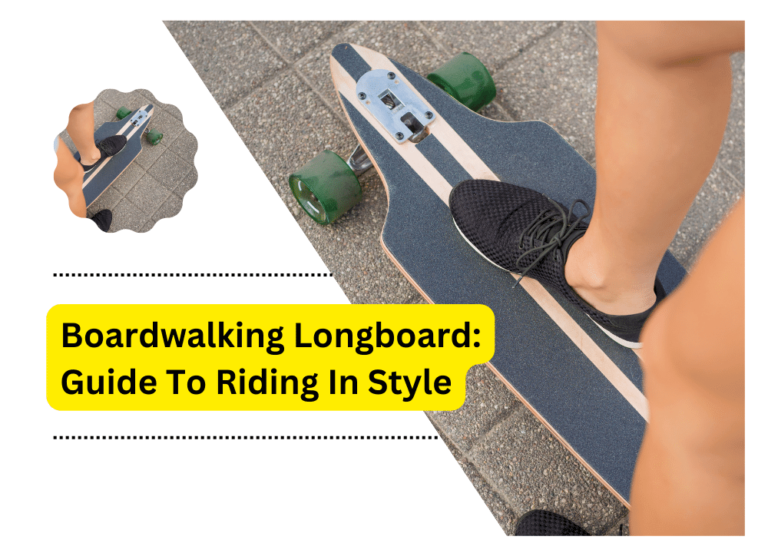Common Longboard Injuries- Causes and Prevention

Usually, longboards are considered to be more stable than skateboards. Yes, they are! Due to their more stable design, soft wheels, and trick & downhill ride. However, you can still face some longboard injuries.
According to research, the longboard injuries ratio is less than skateboard injuries. But are more serious and fatal as compared to skateboard injuries. Meanwhile, common longboard injuries include sprain, fracture, abrasion, and head injuries.
To find longboard injuries, their cause, and how to prevent yourself from getting injured? To get your answer read this complete article.
Common Longboard Injuries
Over 100,000 longboard injuries are reported in the US each year, according to the National Safety Council. Although most of these injuries are minor, some are very serious.
Traumatic brain injury (TBI)
According to the article Boarding Injuries: The Long and the Short of It. “Lustenberger et al. conducted a study to evaluate skateboard-related epidemiology using five years of skateboard-injury data from the National Trauma Data Bank” About 30.6% of all longboard injuries are traumatic brain injuries
A TBI can range from minor concussions to severe fatal brain injuries.
Fractures
Fracture is defined as the breakage and crack of the bone. According to journal “Injury Prevention”
fractures account for almost 25% of all longboard injuries. The most common include
- Arm fracture
- Leg fracture
- Skull fracture
Arm or, specifically, wrist fracture rate is high because of instinctive reaction in which we use our hand to protect ourselves and break fall. Out of 25% of longboard fractures injuries, 20% are arm fractures reported.
Head and neck injuries
Head and neck longboard injuries account for almost 15 % of all longboard injuries. These injuries, in some cases, become so serious and fatal.
Facial injuries
Longboard Facial injuries that were reported most of them were nose and jaw bone breakage
Skin injuries
Cuts and abrasions are common skin injuries caused by longboard accidents. These injuries can easily be treated with first aid; there is no need to worry as these are not serious. But in the case of road rash, proper treatment is required; otherwise, it may lead to serious problems.
Other uncommon injuries
Rather than these, many other injuries are also reported happening due to longboarding, are internal organ damage, spinal cord injuries, and eye injuries.
Cause of longboard injuries
It is important to find and understand the cause of longboard injuries. These will help you to prevent yourself.
Here we discuss all possible causes that are the reason of longboard injuries
Inadequate Protective Gear
Most longboard accidents happen when riders do not wear protective gear while riding. Only a few cases are reported in which the longboarder was with proper safety gear. Only 11% of accidents happen in which longboarders wear helmets according to data collected between 2006-2016.
Inexperience and Lack of Skill
Beginners or inexperience who do not know how to control and balance the longboard and its speed are more likely to face longboard injuries.
However, there is no solid proof that the experience didn’t fall or not be injured.
Poor Road Conditions
Unpaved, uneven roads with gravel, debris, and other obstacles are one reason riders lose control and balance and get longboard injuries.
Reckless and speed Riding
Many riders do reckless Riding at high speeds, don’t follow traffic rules, and engage in reckless behavior, which increases the chances of accidents.
Lack of skill
Many beginner longboard riders, in excitement, try to experiment with different longboard tricks which are beyond their skill level and end up having longboard injuries.
How to Prevent Longboard Injuries?
Wear Essential safety gear.
Wear essential safety gear, which includes
- Knee pad
- Elbow pad
- Wrist guard
- Nonslippery shoes with a strong grip
Wear these to save yourself from knee, elbow, and wrist injuries while riding on a longboard.
Wear helmet
It is important to wear a helmet to prevent head and brain injuries. We recommend you choose the
- longboard specific helmet
- Proper fit is important for a comfortable ride
- If you buy the general multisport helmet, make sure it is tested for longboarding
Don’t ride while drunk
Alcohol is injurious to health in case you are drunk. Avoid riding longboards when drunk because it will impair judgment, reduce focus or concentration, decrease balance and impaired vision, and lead to serious longboard injury and even death.
Ride according to skill level
If you are not skilled, try to start longboarding slowly and gradually increase the speed as you become skilled or experienced.
Don’t try the longboard tricks which are beyond your skill level.
Choose the right terrain
Choose those areas for longboard riding which are smoothly paved, with minimal traffic and good vision. Beware of obstacles like vehicles and pedestrians, and other surprising obstacles.
Practice Falling Techniques
It sounds funny to practice the falling technique, but minimizing the risk of severe longboard injury is important.
One of the best practices is to try to roll on falling instead of extending your arm, which causes an arm fracture. Rolling dissipates the kinetic energy and helps to break long falls.
Learn Proper Techniques
As a beginner, you minimize the risk of longboard injuries. It’s better to seek advice or training from an experienced one and learn proper techniques to stop or braking and balancing. Many beginners don’t know how to stop the longboard at high speed and get panicked and end up losing balance, and a fall leads to minor and major injuries.
Choose the right longboard.
All mentioned preventive measures are important, but the most important is the right longboard. If you are uncomfortable with your longboard, how could you think of a safe ride with it?
Choose according to your skill level, ride type, and weight because some longboards are designed for speed to travel long distances, and some are according to weight.
Make sure before buying to do proper research and try to check if it suits you or not.
Regular Maintenance
Regular maintenance of the longboard is important to check it before the ride. Check the wheel, bearing, and trucks for wear or tear.
If there is a problem, then repair or replace the broken part. If you find a cut in your longboard wheel or bearing that is not working immediately, replace it; otherwise, it will lead to a serious longboard accident.
FAQ
The common longboard injuries are head, skin, facial injuries, and arm, leg, and skull fractures.
Use the proper safety gear, choose a safe route, check your board before riding, choose the right equipment, and, most important, ride according to your skill level.
There is no proper record, but according to the “Longboard and skateboard injuries” article, five deaths in 2012 were associated with longboarding in the USA and Canada.
Longboard riding is safe, and there are few chances of getting injured. If you want to cruise on a flat road, park, or mild slope area, it is very safe.
Final Thoughts
There is very little data regarding longboard injuries as compared to skateboard injuries. According to available data, the most common longboard injuries include TBI, cranial injuries, skin, facial, and internal organ injuries, and fractures mostly happen due to inexperience level or not wearing safety gear, specifically a helmet. You can prevent yourself or reduce the effect of injury by following all preventive measures.






